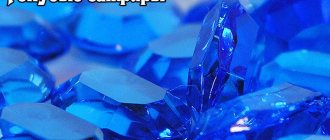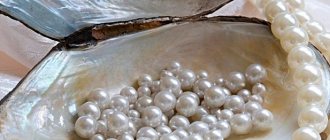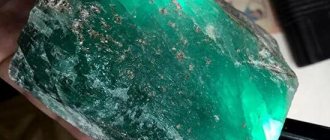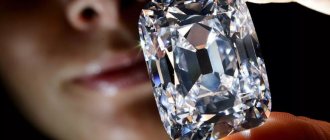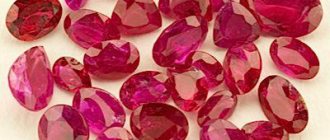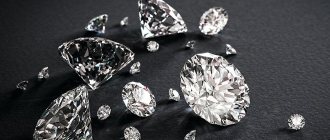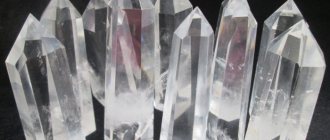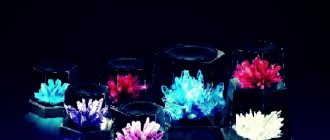Because amber has a number of unique characteristics, there are several different tests that can be used to determine whether it is real or not. People want to be sure that they are buying jewelry made from real Baltic amber, because other types of stone and fakes do not contain succinic acid, which determines the health benefits of such jewelry. The most common methods for testing this natural resin are listed below.
Visual inspection of amber
The first thing you can do when checking amber and jewelry made from it is to examine it visually. Real amber beads tend to have a unique appearance, so inspection is limited to looking for imperfections, which include tiny cracks and air bubbles. In addition, the beads should vary slightly in size and do not have to be round in shape. Amber is usually slightly warm to the touch, unlike most fakes.
Appearance
Natural amber has a transparent, uniform color with small inclusions. The color of natural stone is much darker than that of artificial stone. Noticeable uniform multiple inclusions of air bubbles throughout the entire area of amber indicate a fake. The inclusion of plant or animal remains in amber does not guarantee the authenticity of the stone. Real amber cannot be of the correct shape and have a bright shine. Natural amber, especially old amber, has micro chips.
Damage in the form of cracks and chips is a sign of real stone.
A fake made of plastic or glass has a porous structure from casting. There are no chips on the surface of artificial amber. There should be no seams on natural amber. The seams on the amber beads indicate a plastic fake.
Salt water test
Another effective test to distinguish real from fake amber is the salt water test. To carry it out you will need about 7 teaspoons of salt and a medium cup of water. Add all this salt to the water and mix well until completely dissolved. Then place the amber stone in the water. Real amber should float easily in it, while most fakes will quickly sink. The main disadvantage of this method is that it is not very suitable for testing jewelry containing metal or other elements. However, it works well on individual pebbles.
Authenticity tests at home
At home, you can carry out several tests that will help you distinguish a fake with a greater degree of reliability. However, some of them can damage the stone.
It should be borne in mind that the physical properties of amber may coincide with resins, so one test will not be enough. It is advisable to carry out several checks and take other indicators into account. Sometimes it is possible to distinguish imitation only in laboratory conditions.
Using salt water
The method is used only if the stone does not have a frame. Most samples have low density, so they float in salt water. To carry out the test, prepare a solution of 8 tsp. salt and 200 ml of liquid.
The spice is completely dissolved in water, then the stone is lowered. Crafts made from bakelite, burnite and glass sink, while amber most often floats. If the mineral is large, take a large container and add as much salt as the water will take.
The test is not considered completely reliable. Some specimens are quite dense, so they sink even in salt water. The lightest samples float in tap liquid.
Real amber will float in salt water.
Electrification
Natural stone is highly susceptible to electrification. For this test you will need a piece of wool or silk. The mineral is rubbed hard against the cloth, then brought to the paper. Natural stone immediately attracts the material to itself.
Using this method, amber is distinguished from copal. It does not become electrified even with prolonged exposure. Plastic can also attract paper, but this ability is less pronounced. To distinguish it from a real mineral, you will need a verified sample or visual inspection.
Natural amber is highly electrified.
Smell when melting
The mineral does not have to be melted. You can rub it hard against your palm to raise the temperature of the stone. In this case, the natural mineral will have a light pine aroma.
The fake resin smells even without exposure to high temperatures. Copal imitations begin to adhere to the skin after heating. Glass fakes have no aroma. Plastic can smell bad.
Additionally, you can bring the product to the fire. Use, for example, a lighter. When it comes into contact with a flame, the natural material will begin to boil and ignite. Black smoke will appear.
Counterfeits are either insensitive to fire or melt much faster. However, this is a traumatic method that will ruin the decoration. An alternative is to use a hot needle.
It will also damage the surface, but the defect will be less pronounced. Upon contact, white smoke should emit from the natural stone and a resinous odor will appear.
Amber is subject to combustion.
Solvent test
Natural stone is more resistant to solvents. As the latter, you can use, for example, acetone. Soak a cotton pad in the liquid and apply it to the surface for 1-2 seconds.
You cannot keep the stone in the solvent for more than 3-5 seconds, as this will ruin its appearance. With short-term exposure, amber remains the same and does not change.
Imitations made from copal deteriorate greatly, their surface becomes dull, and irregularities appear. The color changes. When pressed amber comes into contact with a solvent, it becomes sticky.
Alcohol
Alcohol is used in the same way as a solvent. Some stones are resistant to acetone, but are destroyed when exposed to ethyl alcohol. Other minerals, on the contrary, are resistant to the latter reagent.
Chemical reagents
Alcohol and acetone belong to the list of chemical reagents. Additionally, you can use stearin or ethers. They greatly change the appearance and tactile sensations when interacting with stones.
The mineral may, for example, become cloudy. But the abuse of chemical reagents can also spoil the amber itself, so reagents are used with caution.
Testing with chemical reagents must be carried out with care so as not to damage the stone.
Friction test
One of the easiest ways to distinguish amber from copal is to perform a friction test. Because real amber has electrostatic properties, it can attract tiny pieces of paper and dust particles when sufficiently charged. To charge amber, wrap it in a cloth and rub it for a while (20-60 seconds). After this, bring the stone to a strand of hair. If the hair is attracted to it, then static electricity has formed, and you most likely have real amber in your hands. Conversely, if the stone did not charge, but rather became sticky, it means it was dug.
Properties and characteristics of the stone
Amber is the fossilized resin of coniferous trees that grew on the planet 40-50 million years ago. There are many legends regarding the origin of the stone, and all of them are accompanied by a number of scientifically proven facts.
The chemical composition of amber is as follows: C10H16O, where there are 10 carbon molecules, 16 hydrogen molecules and oxygen. Since amber was created under natural conditions, it always contains impurities in the form of aluminum, sulfur, iron, and natural components.
The color of the stone varies from light yellow to rich honey. The rarest specimens found in nature are green and blue amber. It can be transparent or cloudy, it all depends on the conditions in which the resins hardened.
Hardness on the Mohs scale is small, only 2-2.5 units. This is due to the low density - 1.05-1.09 g/s3.
If the stone is natural, then upon contact with fire it will ignite. When burning, a unique pine smell is released, which indicates the naturalness of the material. When amber is exposed to fire, it becomes viscous and viscous, reminiscent of melted toffee. When the temperature drops, the resin immediately hardens into any form.
With intense friction against a natural wool surface, amber can create static tension. If you rub a small piece of natural material on a woolen fabric, then the amber will be able to attract small threads, dust, and pieces of paper.
All these properties of the stone make it possible to detect the presence of fakes. Modern technologies make it possible to create an imitation of amber from any natural resins. This significantly reduces the cost of jewelry, but natural stone will always be in price. For example, the company “Amber Palace” produces natural amber.
Amber
Amber is poorly stored in natural conditions. Under the influence of the mass of layers of earth, the stone is deformed and has practically no jewelry value. Amber mining is complicated, so in some cases the cost of amber is equal to the cost of white gold.
Hot needle test
Another way to distinguish real from fake amber is a hot needle test. To perform this test, you heat a needle and press it onto the stone. If the needle only went in a little or left cracks, you are most likely looking at real amber. Additionally, if the amber is real, you should also smell old rotten wood. When carrying out the same procedure with fakes, the needle enters very easily, and the smell of plastic or fresh pine (copal) appears. The main disadvantage of this test is that it may leave a small mark due to burning.
Methods of counterfeiting
Materials used in the production of artificial amber products:
| Resin | Slight deformation from slight finger pressure. Homogeneous structure. There are no bubbles or inclusions. Persistent light pine scent. |
| Ambroid (pressed amber) | It is waste from the production of amber jewelry. Essentially it is amber, but of a low grade; products are several times cheaper than those made from solid amber. |
| dug | Resin from evergreen trees. Experts and jewelers consider copal to be the “younger brother of amber.” The surface of the artificial stone has many cracks. The main difference between copal is that it produces a pleasant pine aroma without heating. |
| Glass | Differs in hardness. The glass is almost impossible to scratch; there are no chips or cracks on the products. |
| Plastic, acrylic, plexiglass | Plastic products are 100% similar in appearance, but are lighter than amber, have a different density, uniform color and structure. |
How to distinguish amber from a fake
If you have the opportunity, be sure to seek help from a specialist before purchasing, although sometimes an experienced craftsman will not be able to distinguish a real stone from a high-quality fake. Here are some simple ways to help you identify real amber on your counter.
Look through the stone at the color of the sun. Natural amber cannot have a uniform and even structure, without inclusions and internal smudges. Remember, the stone took many years to form; how can it be perfectly homogeneous? Real amber is quite light (unlike other artificial stones). The only thing lighter than amber is plastic. Sometimes fragments of animal hair, insects, and other small particles remain in the resin of a coniferous tree. Manufacturers often use this technique by placing an insect inside the artificial resin.
But pay attention to the body of the unfortunate midge or mosquito - if it is smooth, the wings are spread and arranged symmetrically - it is a fake. If a midge in its natural environment got into the resin, it probably tried to get out; its wings and limbs would be damaged in this case
And the beautiful insect posing in front of you is a cheap and tasteless imitation. Notice the bubbles inside the stone. If the amber is natural, the bubbles are spherical. That is, the material is so dense that the air does not tend to escape, but freezes at the smallest volume. But in the viscous structure of the resin, air tends to the surface, and therefore freezes in an elongated shape. You can determine the authenticity of amber using the following method. Prepare supersaturated salt water in a glass of water. That is, add so much salt to the water so that it stops dissolving and settles in small crystals at the bottom. Place the amber in salt water. If the stone is real, it will float to the surface; if it is artificial, it will certainly settle to the bottom. However, this method is only suitable for clean stone, without a frame. That is, if you have an amber ring, it is useless to check it, since the weight of the metal frame will still pull it down. Sometimes it happens that beads dipped in salt water freeze in the middle. How is this possible? In such cases, it is advised to loosen the beads. Here everything becomes clear - some beads remain on the surface, while others hopelessly fall to the bottom. I wonder why then there is no amber floating on the surface of the Baltic Sea, since there is so much of it at the bottom? And all because the water there is not salty, so precious stones do not float up. This is for the better - we will preserve the beauty and wealth for future generations... In the store, amber can be checked as follows. Rub it on wool or hair. A real stone will begin to become electrified and attract small pieces of paper and hair. Copal and other resins do not have this property.
If you have an ultraviolet lamp, you can use it to check the authenticity of the stones. To do this, look at the light through the supposed amber. Natural stone will shimmer with blue and green colors. Artificial stone will not give any reaction. If all methods have been tried, you can resort to extreme methods. To do this, turn the product over and try to cut off a piece of stone from the inside. Natural amber will crumble and you will not be able to make shavings. But artificial resin will certainly curl into twisted shavings. If you have acetone or just nail polish remover, use it in your search for the truth. Soak a cotton pad in the liquid and rub it over the product. If you have copal, cowrie or other young resin in front of you, a mark will be left on the stone. But there will be no stain on natural amber.
Knowing about these simple methods, you will not allow yourself to be deceived.
Since ancient times, amber has been famous not only for its beauty, but also for its mystical properties. Ancient warriors carved beads from stone and certainly wore them on a campaign in order to return home unharmed. At birth, the child was given an amber stone with a depression - it was believed that an ancient spirit lived in it and would protect the baby. Take care of family amber valuables; perhaps they will preserve peace of mind and home comfort.
Materials
An artificial gem is made from the following components:
- natural (resins of non-coniferous trees - legumes, cherries, pressed amber chips);
- synthetic (glass, epoxy resin).
Resin
To make imitations, resins from non-coniferous trees or polymer synthetic compounds are used. Used:
- The resin of plants from the legume group, for example, acacia and araucaria - copal. A dry insect is often placed there, with its legs and wings spread out for plausibility.
- Mixing resin (fresh resin secreted by the tree) with acetone and polystyrene foam or rosin and shellac in certain proportions.
- A mixture of epoxy resin, rosin and shellac.
Glass
Transparent imitations of amber are obtained from glass. Thanks to dyes, the color of the product can be any. This type of counterfeit is easier to spot than counterfeits made from other materials. You can determine the artificial nature of a stone using the following:
- glass shine;
- resistance to external damage and chemicals;
- high melting point (from 750 °C).
Pressed amber
Crumbs of amber, obtained during the production of jewelry and during the extraction of stones, are heated and pressed, giving the product the desired shape. The composition of ambroid (pressed amber) is identical to the original, but differs in quality characteristics.
You can distinguish a fake by its characteristics:
- opaque;
- does not contain inclusions;
- no air bubbles.
Electrostatic charging
If natural amber is intensively rubbed against wool or silk, it becomes negatively charged. This property can be tested by applying electrified amber to small pieces of paper. They should rush to the surface of the amber or stick. Some types of plastics have a similar property. But in amber it is more clearly expressed. The electrostatic method makes it possible to identify counterfeits that completely lack electrification properties. Copal (it is sold under the guise of “young” or “immature” amber) does not become electrified when rubbed.
Medicinal properties
Since ancient times, it was believed that there were practically no diseases that amber could not cure. Today this gem is very actively used in medical practice. Amber helps in the treatment of sore throats, headaches, toothaches and many other ailments. The gem has an effect on the spleen, improves the activity of the heart, and softens the effects of pressure changes. Amber has bactericidal properties. Its ability to prevent the process of destruction of red blood cells (hemolysis) is noted.
Amber crumbs, as well as its salts, are used to make medicinal preparations. In some countries, amber tincture is used as a remedy for diseases of the respiratory tract and throat, and colds.
Amber containing iodine is useful to wear in beads for the prevention or treatment of thyroid diseases. The gem improves the functioning of the digestive system. Succinic acid is used as an anti-inflammatory, stimulating, anti-stress and anti-toxic agent. It is believed that a gem worn around the neck, acting on the carotid arteries, will cleanse the body of toxins.
Amber mouthpiece
Doctors have noticed that an amber mouthpiece reduces the risk of cancer in adherents of the bad habit. In general, amber therapy methods and techniques are used in oncology: this slows down the growth of tumors.
Amber will help with varicose veins and joint diseases. It will relieve inflammation and restore the functioning of venous valves. The gem will help with magnetic storms and improve vision. When exposed to incense, cough and asthma disappeared.
Amber plates are rubbed on the temples for headaches. The mineral helps improve metabolism.
If you lubricate your teeth with crushed amber, they will become shiny, white and stronger. Children who are teething should be given a piece of this gem to chew on.
Resin
Resin from different tree species is often passed off as natural stone. This imitation is softer than a natural gem. Fresh resin has a light pine aroma. Amber can give off such a smell, but only after being set on fire or strongly rubbed.
If you examine a resin fake in the sun, it will have a homogeneous structure. And any stone that grows over centuries has layered inclusions.
Types of amber and their features
Today, more than 200 types of mineral are found. The most famous and popular stones include:
- Succinite is Baltic amber. It accounts for more than 95% of all stones that come to the market. The remaining species are considered amber-like. Such crystals can be yellow, red, orange. White specimens are also found.
- Gedanite - low oxygen content makes this type of amber very fragile. The gem is characterized by a waxy yellow tint.
- Glessite is a mineral with an opaque structure. It can be red, black, dark brown. Glessites practically do not include foreign components.
- Stanthienite - this type of amber is considered very fragile. It is characterized by a dark brown color.
- Bokkerite - this durable mineral has a dark brown tint. It is also characterized by a matte texture.
- Kiscellite - this type of mineral has a yellow or greenish color.
- Schraufit - the crystal has a bright red or slightly yellowish tint.
Reminders before purchasing
Jewelry with fake stones is often sold as expensive. At the same time, it is not only small items that are counterfeited. It will not be possible to check amber in a store in every possible way. However, you can ask the seller to demonstrate the reaction of the stone to the ultraviolet light of a counterfeit banknote detector. It is necessary to carefully examine the product, analyze its ability to electrify, and feel the aroma.
Before checking the naturalness of an item, it is appropriate to seek advice from the seller. A store with a positive reputation will be happy to tell you and demonstrate in practice how to distinguish real amber. Conscientious workers take pride in the opportunity to demonstrate in practice how to determine the authenticity of the amber being sold.
Using even some recommendations will significantly reduce the chance of purchasing a fake.
Where can I watch DAX index quotes in real time?
If you do not use broker trading platforms or need to quickly check quotes: on the Internet, using the following links:
- www.ru.investing.com/indices/germany-30-advanced-chart
- www.finance.yahoo.com/quote/%5EGDAXI/chart?p=%5EGDAXI
Online quotes can be viewed in the trading platforms of Forex brokers. You can choose from the TOP 5 brokers who are recommended for opening an account with them in the rating of Forex brokers from the Masterforex-V Academy. For example, NordFX, FortFS or FXPro.
Light, luminescence
In the light of an ultraviolet lamp, amber luminesces to one degree or another. In transparent samples, a bluish glow of varying intensity is visible. As the transparency of the stone decreases, the glow effect weakens. Smoky translucent ambers glow pale blue. Under the influence of ultraviolet light, the structure of wavy amber deposits, banding, and transitions caused by different degrees of turbidity are clearly visible. “Cloud” and “bone” amber glow milky white with a faint bluish tint. Untreated amber with a so-called sugar crust luminesces in brown tones. Synthetic resin based on bakelite is inert in ultraviolet rays, casein imitations glow yellow.
General recommendations
There are several general rules and recommendations that allow you to largely understand how to identify real amber from a fake.
- If the tracings and sparkles that are located in the thickness of the stone are tightly packed, uniform and almost identical, then there is a possibility that it is a fake. Most likely burnt. But perhaps it is also calcined amber;
- You should be wary if the color of beads or other products is uniform. There are no transitions or any texture. It's probably a fake. Although there are cases when fakes have a texture characteristic of real amber;
- The appearance of natural stone is more expensive than that of fake stone. Especially when the product has not been subjected to heat treatment. Natural resin has a very interesting color. Has chaotic transitions of shades. The array always contains a unique pattern, characteristic exclusively of natural amber.
But these are all general points. There has not yet been a clear answer to the question of how to distinguish fake amber from real amber. We will correct the situation.
So it is worth recalling the importance of being able to distinguish between fake silver and imitation natural gold.
Origin story
The process of natural production of the mineral began in the Cretaceous period of the Mesozoic era. It was then that life began on earth. Due to extreme warming, the giant trees continuously released resin. After its contact with the air, it froze, filling reservoirs and soil.
The flow of water gradually washed away the stones, moving them around the planet. The most ancient deposits were located in what is now Denmark, near the coast of the Netherlands. Gems were also found in India, on Lake Baikal, there are many of them in the Kaliningrad region, along the Mediterranean coast of Africa. Nowadays, amber mining continues in Ukraine, the Far East, Siberia, and Poland.
